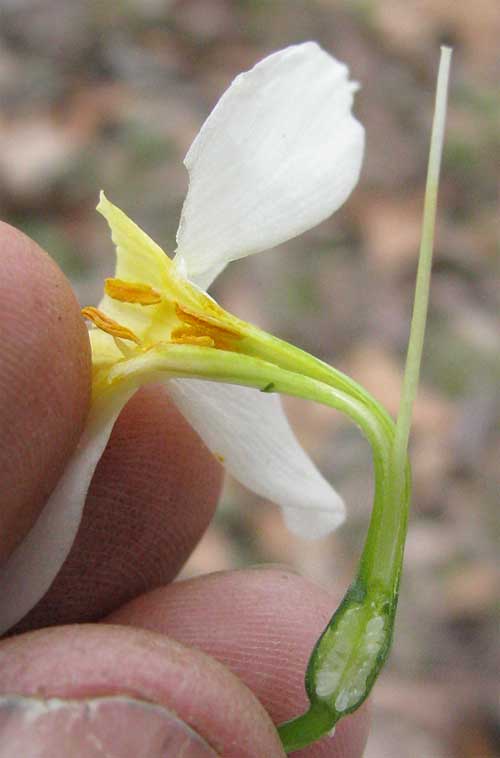Excerpts from Jim Conrad's
Naturalist Newsletter
from the February 2, 2009 Newsletter, issued from the forest near Natchez, Mississippi; elevation ~400ft (120m), ~N31.47°, ~W91.29°:
A BUNCH-FLOWERED NARCISSUS WELCOME
Maybe the most conspicuous harbinger of spring here is the bunch-flowered narcissus shown in Karen's yard below:

Bunch-flowered narcissus isn't capitalized because that name applies to a large group of narcissuses, all considered as belonging to the same genus AND species -- NARCISSUS TAZETTA, a species originally from a large swath of the Old World extending from the Canary Islands to Japan. The species is so robust and pretty that horticulturalists have derived many, many ornamental varieties from it. You may recognize some of the varietal names: Paper White; Chinese Sacred Lily; Golden Dawn; Martha Washington; Odoratus; Soleil d'Or; Sugar Cup; White Pearl, and many others. I'm not sure which variety this one is. A web page showing 30 varieties -- several very similar to this one -- is at http://www.billthebulbbaron.com/Narcissus.html.
Narcissuses -- members of the genus Narcissus -- belong to the Amaryllis Family, and their floral anatomy is fairly representative of that family. You can see a cross section of one of the above flowers below:

In that picture the broad, white, petal-like appendages are "tepals," which are segments of the calyx/corolla complex (the "perianth") in which calyx lobes (sepals) are indistinguishable from corolla lobes (petals). This is typical for the family.
If the white things are tepals, then what is the yellow structure in the middle? That's the crown, or corona, typical of a cluster of genera in the family, including Hymenocallis spider-lilies, Amazon-lilies, Lycoris spider-lilies and Star-Grass (Hypoxis). Crowns are structures completely absent in most flowers, and often derive evolutionarily from modified stamens, or staminodes.
Inside the yellow crown you can see several yellow- orange, frankfurter-shaped, pollen-producing anthers, some held outside the floral tube and some closely packed right at the floral tube's throat. Below the anthers I've split upon the greenish, slender tube so you can see the straight, cream-colored style poking stiffly upward. At the style's tip you see a tiny bulge, and that's the stigma, where pollen is supposed to land, germinate, and send rootlike pollen tubes down through the style to the oval, green ovary below, just beyond my thumb-tip.
I've opened the ovary so you can see tiny, white, oval ovules stacked neatly inside it. Each ovule, once it's fertilized, will mature into a seed, and the green ovary itself will enlarge into a green fruit.
Because the floral parts arise above the ovary and not below it, this is a classic "inferior ovary." If the floral parts arose below the ovary, with the ovary sitting inside the flower like a cherry in a bowl, the ovary would be "superior." Most wildflower ovaries are superior, so having an inferior ovary like this is worthy of recognition.
Bunch-flowered Narcissuses are distinguished among the 50-100 Narcissus species by having four or more flowers arising from each flower stem and the crown being much less than half as long as the tepals, plus the crown isn't wrinkled or "crisped."